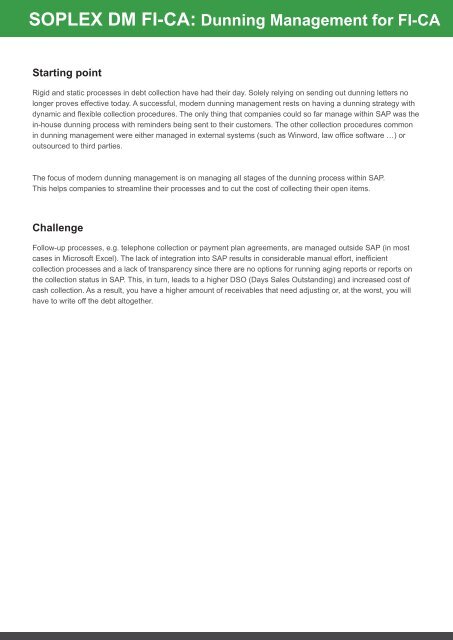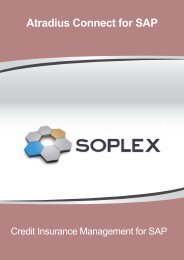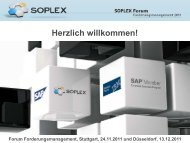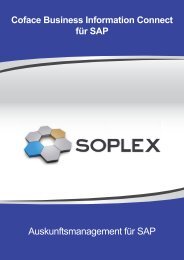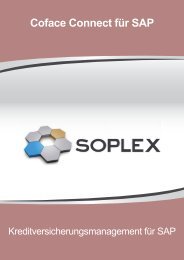Download PDF - Soplex Consult GmbH
Download PDF - Soplex Consult GmbH
Download PDF - Soplex Consult GmbH
You also want an ePaper? Increase the reach of your titles
YUMPU automatically turns print PDFs into web optimized ePapers that Google loves.
<strong>Soplex</strong> DM FI-CA: Dunning Management for FI-CA<br />
Starting point<br />
Rigid and static processes in debt collection have had their day. Solely relying on sending out dunning letters no<br />
longer proves effective today. A successful, modern dunning management rests on having a dunning strategy with<br />
dynamic and flexible collection procedures. The only thing that companies could so far manage within SAP was the<br />
in-house dunning process with reminders being sent to their customers. The other collection procedures common<br />
in dunning management were either managed in external systems (such as Winword, law office software …) or<br />
outsourced to third parties.<br />
The focus of modern dunning management is on managing all stages of the dunning process within SAP.<br />
This helps companies to streamline their processes and to cut the cost of collecting their open items.<br />
Challenge<br />
Follow-up processes, e.g. telephone collection or payment plan agreements, are managed outside SAP (in most<br />
cases in Microsoft Excel). The lack of integration into SAP results in considerable manual effort, inefficient<br />
collection processes and a lack of transparency since there are no options for running aging reports or reports on<br />
the collection status in SAP. This, in turn, leads to a higher DSO (Days Sales Outstanding) and increased cost of<br />
cash collection. As a result, you have a higher amount of receivables that need adjusting or, at the worst, you will<br />
have to write off the debt altogether.


